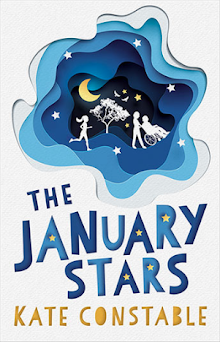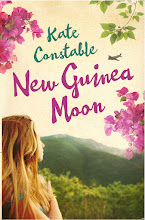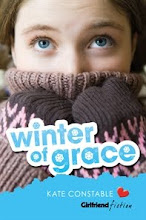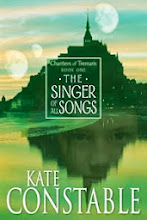Well, well, well! Barely a month after my last successful visit to Savers, where I found Gillian Avery's The Elephant War, Alice and I paid another visit, and behold! Another Gillian Avery! Do the Savers' staff have a box of them out the back? Are they doling them out when they see me slink through the door?
The Greatest Gresham was first published in 1962, but it's set in Avery's favourite period of the 1890s (though in the suburbs of London this time, rather than Oxford). One one level, it's a charming friendship story, bringing together the timid, respectable Gresham children with their rackety new next-door neighbours, supercilious Richard and imaginative Kate. A secret society is formed, dares are exchanged, and parents are horrified, but everyone learns something in the end.
But on another level, there is a much darker narrative lurking in the background. The Greshams (except for the favourite, little Amy) are timid because they are almost paralysed with fear of their over-bearing, ex-military father, who 'roars' at them and is frequently made angry by his disappointing offspring. In contrast, the Holt children are benignly neglected by their loving but distracted father and aunt. Clever Richard is cramming so hard for a scholarship exam that he makes himself almost physically ill, while dishevelled Kate, who dreams of being a duchess, longs for the order and predictability of the Gresham household. All four of the older children suffer from anxiety to some degree, whether it's caused by terror of their father, fear of what 'other people think', or fear of academic failure. In the end, it's spirited Amy and bold Aunt B, who refuse to be bound by others' judgements, who come out winners.
A delightful book, but also a very good one.
26.4.17
24.4.17
Long Ago When I Was Young
I stumbled across this short memoir, Long Ago When I Was Young, by one of my favourite childhood authors, E. Nesbit, while browsing on Brotherhood Books. I'd never heard of this book's existence, so I had to act quickly to grab it while it was still there -- didn't I?
E. Nesbit's magical (and non-magical) novels were a staple of my youthful reading. The Phoenix and the Carpet, Five Children and It, The Wouldbegoods and The Treasure Seekers, and of course The Railway Children, were borrowed and re-borrowed. I tried reading them to my children but the stories were too slow, too Victorian, and they didn't 'take', which made me so sad, as Edith Nesbit is the godmother of modern urban fantasy. Edward Eager acknowledged his debt to her in every one of his own delightful books, and I believe she invented the genre of 'magic in the real world', or at the very least popularised it.
This slim volume, beautifully illustrated by Edward Ardizzone, collects some of Nesbit's most vivid childhood memories of growing up in the 1860s. She had an unsettled youth, moved from one boarding school to another as her mother shifted around the country with young Edith's (Daisy) ill elder sister. The family also spent time travelling around France and Germany, before finding a more permanent home in the Kentish countryside. The most poignant chapters tell of the things that frightened Daisy -- ghosts, the dark space behind the bed, the gas turned low to make creepy shadows, and especially the terrifying mummies in a crypt that she was taken to see, and which gave her nightmares for many years. What a great idea, to take a sensitive child to see some half-preserved corpses in a cave!
This book has reminded me how much I loved Nesbit's books. Time for a revisit, perhaps.
E. Nesbit's magical (and non-magical) novels were a staple of my youthful reading. The Phoenix and the Carpet, Five Children and It, The Wouldbegoods and The Treasure Seekers, and of course The Railway Children, were borrowed and re-borrowed. I tried reading them to my children but the stories were too slow, too Victorian, and they didn't 'take', which made me so sad, as Edith Nesbit is the godmother of modern urban fantasy. Edward Eager acknowledged his debt to her in every one of his own delightful books, and I believe she invented the genre of 'magic in the real world', or at the very least popularised it.
This slim volume, beautifully illustrated by Edward Ardizzone, collects some of Nesbit's most vivid childhood memories of growing up in the 1860s. She had an unsettled youth, moved from one boarding school to another as her mother shifted around the country with young Edith's (Daisy) ill elder sister. The family also spent time travelling around France and Germany, before finding a more permanent home in the Kentish countryside. The most poignant chapters tell of the things that frightened Daisy -- ghosts, the dark space behind the bed, the gas turned low to make creepy shadows, and especially the terrifying mummies in a crypt that she was taken to see, and which gave her nightmares for many years. What a great idea, to take a sensitive child to see some half-preserved corpses in a cave!
This book has reminded me how much I loved Nesbit's books. Time for a revisit, perhaps.
20.4.17
My Side of the Mountain
Next month's theme for the Convent book group is Wilderness, and I re-read Jean George's 1959 American classic, My Side of the Mountain as our junior fiction selection. (Our YA choice is Gary Paulsen's Hatchet, which actually seems to me to be pitched at about the same level -- not sure why one is in one category and the other is in the other? Something to discuss at the meeting, perhaps!)
George's book, largely based on her own childhood memories of camping in the wild, tells the story of Sam, aged about 13, who runs away from the city to test his own survival skills. (His parents are remarkably relaxed about this decision!) He makes himself a home in a hollow tree, tames a falcon (much more easily than in H is for Hawk, by the way), fishes and gathers wild plants, and even makes himself clothes from deer and rabbit skin. He lives well and healthily, makes it through winter, and only toward the end of the book does he find himself craving human company.
Killing two birds with one stone as I often do, I talked about My Side of the Mountain at my other book group, and we collectively wondered why there is so little of this kind of positive wilderness writing in Australian children's literature. For authors like Ivan Southall, landscape is a hostile enemy in a life or death struggle for survival (eg Ash Road, To the Wild Sky). Only Nan Chauncy seems to celebrate and delight in wilderness (eg They Found a Cave). Is it because white authors don't feel entitled to belong in Australia's 'wild' country? Australian literature has a long tradition of 'lost child' narratives, but very few stories of harmonious living in nature. Hopefully Australia's growing body of Indigenous writing for children and adults will soon fill this gap -- it would be a healthy development, I think.
George's book, largely based on her own childhood memories of camping in the wild, tells the story of Sam, aged about 13, who runs away from the city to test his own survival skills. (His parents are remarkably relaxed about this decision!) He makes himself a home in a hollow tree, tames a falcon (much more easily than in H is for Hawk, by the way), fishes and gathers wild plants, and even makes himself clothes from deer and rabbit skin. He lives well and healthily, makes it through winter, and only toward the end of the book does he find himself craving human company.
Killing two birds with one stone as I often do, I talked about My Side of the Mountain at my other book group, and we collectively wondered why there is so little of this kind of positive wilderness writing in Australian children's literature. For authors like Ivan Southall, landscape is a hostile enemy in a life or death struggle for survival (eg Ash Road, To the Wild Sky). Only Nan Chauncy seems to celebrate and delight in wilderness (eg They Found a Cave). Is it because white authors don't feel entitled to belong in Australia's 'wild' country? Australian literature has a long tradition of 'lost child' narratives, but very few stories of harmonious living in nature. Hopefully Australia's growing body of Indigenous writing for children and adults will soon fill this gap -- it would be a healthy development, I think.
17.4.17
Melbourne Then and Now
I found this book on my Dad's shelves -- one of many hidden gems tucked away. The silver lining to the arduous and emotional business of clearing out the parental home is that we are constantly making wonderful discoveries, and even Dad admits that without this process, some of his treasures would have remained unlooked-at in cupboards and filed away on bookshelves. At least this way he has actually been able to enjoy leafing through some precious volumes (I'm thinking of the cloud atlas* he bought as an eighteen-year old, carefully stored in its original shipping box).
Anyway, Melbourne Then and Now is a wonderful little book, a simple concept thoughtfully executed. On each double page spread, a photograph of some old Melbourne landmark is married with a modern shot from more or less the same place. Sometimes the buildings are still there, looking exactly the same, with only the surroundings changed; sometimes the original has altered beyond recognition or disappeared altogether. For the first time I realise how Market St acquired its name, and why the Customs House sits where it does (the wharves used to lie directly in front of it).
And if I could resurrect one lost Melbourne building, I would choose the magnificent Federal Coffee Palace. Situated on the corner of Collins and King Streets, its dining rooms could seat 600 patrons, and when it was first built, its dome could be seen by ships at sea. Demolished in 1973, it was replaced by yet another anonymous, boring skyscraper. What a shame!
* Turns out a cloud atlas is an actual thing, not just a novel! Who knew?
Anyway, Melbourne Then and Now is a wonderful little book, a simple concept thoughtfully executed. On each double page spread, a photograph of some old Melbourne landmark is married with a modern shot from more or less the same place. Sometimes the buildings are still there, looking exactly the same, with only the surroundings changed; sometimes the original has altered beyond recognition or disappeared altogether. For the first time I realise how Market St acquired its name, and why the Customs House sits where it does (the wharves used to lie directly in front of it).
And if I could resurrect one lost Melbourne building, I would choose the magnificent Federal Coffee Palace. Situated on the corner of Collins and King Streets, its dining rooms could seat 600 patrons, and when it was first built, its dome could be seen by ships at sea. Demolished in 1973, it was replaced by yet another anonymous, boring skyscraper. What a shame!
* Turns out a cloud atlas is an actual thing, not just a novel! Who knew?
Labels:
Australian history,
book response,
Melbourne,
non-fiction
14.4.17
The Exiles
I went to the latest library book sale to donate, not purchase (as per the No New Books rule -- which is in shambles, by the way, if you hadn't guessed). But when I saw The Exiles and The Exiles at Home on the table, I couldn't resist grabbing them. I've become a huge fan of Hilary McKay's Casson family series, and I wanted more of the same.
The Exiles (there are three books altogether), like the Casson books, features a family of mostly girls -- the four Conroy sisters. In this first book, they are dispatched to Big Grandma's house for the holidays while their home is being renovated. Various misadventures ensue, culminating in... [spoilers which may or may not involve a fire where books are destroyed -- this part was hard to read!]
This was a sweet book. I had a bit of trouble telling the four girls apart; their personalities are not as clearly delineated as in the Casson books, in fact this feels like a rehearsal for McKay's later, more accomplished work. It also lacks the emotional heft of the Casson series. But it's a light, funny read.
One thing that dated the book was the fuss made about the sisters' allegedly 'weird' names: Ruth, Naomi, Rachel and especially Phoebe. Well, Phoebe might have been slightly unusual in 1991 (not to me, as I have an English cousin called Phoebe), but it certainly isn't peculiar these days -- perhaps helped by the arrival of Phoebe from Friends. Naming trends come and go, and by all means use your favourite unusual names on your characters, but best not to comment on it at much length. Who knows, the popularity of your character may propel that 'bizarre' name into the Top 10! (Unlikely but it has happened -- babies are actually being named Renesmee now, believe it or not.) I still live in hope of a wave of little Calwyns one day...
The Exiles (there are three books altogether), like the Casson books, features a family of mostly girls -- the four Conroy sisters. In this first book, they are dispatched to Big Grandma's house for the holidays while their home is being renovated. Various misadventures ensue, culminating in... [spoilers which may or may not involve a fire where books are destroyed -- this part was hard to read!]
This was a sweet book. I had a bit of trouble telling the four girls apart; their personalities are not as clearly delineated as in the Casson books, in fact this feels like a rehearsal for McKay's later, more accomplished work. It also lacks the emotional heft of the Casson series. But it's a light, funny read.
One thing that dated the book was the fuss made about the sisters' allegedly 'weird' names: Ruth, Naomi, Rachel and especially Phoebe. Well, Phoebe might have been slightly unusual in 1991 (not to me, as I have an English cousin called Phoebe), but it certainly isn't peculiar these days -- perhaps helped by the arrival of Phoebe from Friends. Naming trends come and go, and by all means use your favourite unusual names on your characters, but best not to comment on it at much length. Who knows, the popularity of your character may propel that 'bizarre' name into the Top 10! (Unlikely but it has happened -- babies are actually being named Renesmee now, believe it or not.) I still live in hope of a wave of little Calwyns one day...
13.4.17
The Marlows and the Traitor (again)
Over on Memoranda, Michelle Cooper has been conducting a fabulous read-through of The Marlows and the Traitor, which has given me the opportunity to read it again, too. And I think I've enjoyed it even more this time; it really is a cracking story, despite the holes in the plot, the poor behaviour of most of the adults involved and the stiff upper lips all round. Forest uses multiple viewpoints and clever pacing to masterfully control the tension of the narrative. In many ways this is a very adult book. We are told, 'The children are expendable' -- you wouldn't get that in Enid Blyton!
In other news, I had to do something absurdly upsetting this week -- get rid of my childhood books. I'm in the process of clearing out my childhood home -- I'm very fortunate that my parents have lived in the same house for nearly fifty years, and the books I read as a four and five year old have all been tucked away in a spare bedroom, to be read by my younger sister and then by my own children. I've saved my special favourites, but I couldn't keep them all, and most of them were so tatty (and had my name scribbled in them!) that they couldn't be passed on. So into the recycling bin they had to go. How ridiculous that this, more than anything other aspect of the business, reduced me to tears! I had to go home, too upset to do any more clearing out that day.
When I got up next morning, I discovered that my lovely husband had fished the books out of the bin and brought them home. 'They don't take up much room,' he said. 'We can keep them.' Bless him.
In other news, I had to do something absurdly upsetting this week -- get rid of my childhood books. I'm in the process of clearing out my childhood home -- I'm very fortunate that my parents have lived in the same house for nearly fifty years, and the books I read as a four and five year old have all been tucked away in a spare bedroom, to be read by my younger sister and then by my own children. I've saved my special favourites, but I couldn't keep them all, and most of them were so tatty (and had my name scribbled in them!) that they couldn't be passed on. So into the recycling bin they had to go. How ridiculous that this, more than anything other aspect of the business, reduced me to tears! I had to go home, too upset to do any more clearing out that day.
When I got up next morning, I discovered that my lovely husband had fished the books out of the bin and brought them home. 'They don't take up much room,' he said. 'We can keep them.' Bless him.
Labels:
antique fiction,
Antonia Forest,
book response,
family,
re-reading
3.4.17
The Mighty West
A massive exception to the No New Books rule: I pre-ordered The Mighty West long before it came out. I feel as if I know Kerrie Soraghan (aka The Bulldog Tragician) from her blog and her posts on the Whitten Oval Online Forum; a lifelong Western Bulldogs supporter, she has chronicled the fans' journey in poignant and funny prose.
This book draws on her blog posts from the last couple of years, so I was already quite familiar with a lot of the material. It was a quick and effortless and very pleasurable read, re-living the Bulldogs' journey to a flag which reached its glorious fairytale conclusion in October last year. Soraghan writes so beautifully of the fan experience -- of the emotional investment that supporters place in these young men, who we kid ourselves we know (from 'a few stilted interviews' and their exploits on the field) and love (often fiercely, often beyond all reason). Fans feel like insiders, and the actions of the team and the club matter to us so much -- and yet ultimately we are not insiders. We know hardly anything of what really goes on inside the club, and we are powerless to affect what happens, whether that's a club captain walking out, or a team winning an impossible game. All we can do is tell ourselves that our silly superstitions (sitting in the same place on the couch, wearing a lucky badge) and our barracking, our cheers and encouragement -- our love -- really do make a difference.
And once in a lifetime, that those dreams and hopes come true.
For Western Bulldog fans, this is a must-read; you will relate to every word. As soon as I finish this post, I'm buying it for my mother-in-law.
This book draws on her blog posts from the last couple of years, so I was already quite familiar with a lot of the material. It was a quick and effortless and very pleasurable read, re-living the Bulldogs' journey to a flag which reached its glorious fairytale conclusion in October last year. Soraghan writes so beautifully of the fan experience -- of the emotional investment that supporters place in these young men, who we kid ourselves we know (from 'a few stilted interviews' and their exploits on the field) and love (often fiercely, often beyond all reason). Fans feel like insiders, and the actions of the team and the club matter to us so much -- and yet ultimately we are not insiders. We know hardly anything of what really goes on inside the club, and we are powerless to affect what happens, whether that's a club captain walking out, or a team winning an impossible game. All we can do is tell ourselves that our silly superstitions (sitting in the same place on the couch, wearing a lucky badge) and our barracking, our cheers and encouragement -- our love -- really do make a difference.
And once in a lifetime, that those dreams and hopes come true.
For Western Bulldog fans, this is a must-read; you will relate to every word. As soon as I finish this post, I'm buying it for my mother-in-law.
Labels:
book response,
non-fiction,
Western Bulldogs
Subscribe to:
Posts (Atom)





















